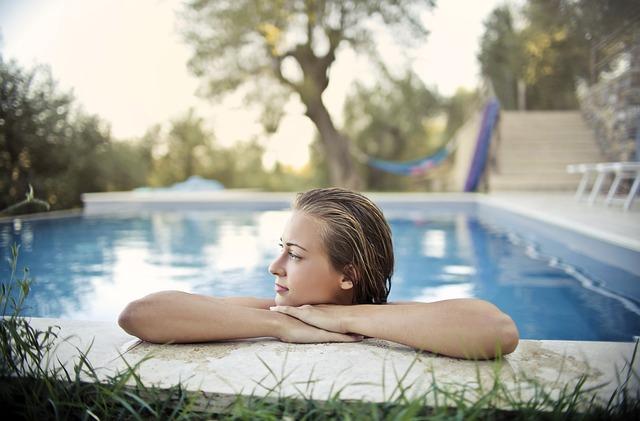As the sun shines brightly and temperatures rise, a refreshing dip in the pool becomes a delightful way for both humans and their furry companions to cool off. While swimming can be a fantastic form of exercise and fun for dogs, it’s essential to ensure their safety in and around the water. Whether your dog is a natural swimmer or a hesitant paddler, understanding the best practices for pool safety is crucial to prevent accidents and ensure a joyful experience for everyone. In this guide, we’ll explore practical tips and warm-hearted advice to help you keep your beloved canine safe and sound while enjoying those splashes and giggles by the poolside.
Understanding Your Dogs Comfort Level in Water
Every dog is unique when it comes to their relationship with water. Some dogs may instinctively love to splash around, while others might be more hesitant. To ensure your furry friend feels secure, observe their behavior around water. Look for signs of anxiety or enthusiasm, such as wagging tails or hesitant steps. It’s crucial to introduce them gradually, letting them explore the shallow end first, where they can comfortably stand and feel the water against their paws.
Here are some tips to gauge your dog’s comfort level:
- Watch for body language: Relaxed ears and a wagging tail often indicate comfort, while a tucked tail or tense body might suggest fear.
- Introduce toys: Floating toys can be a great way to encourage playful interaction with water.
- Use positive reinforcement: Praise and treats can help build a positive association with the pool.
- Take it slow: Allow your dog to take their time adjusting to the water, ensuring they feel safe and confident.
By paying attention to these cues and fostering a supportive environment, you can help your dog enjoy the pool safely and comfortably.

Choosing the Right Safety Gear for Your Furry Friend
When it comes to pool time fun, ensuring your dog’s safety is paramount. The right safety gear can make all the difference. Here are some essential items to consider:
- Canine Life Jacket: A well-fitted life jacket is a must-have, especially for dogs not used to swimming or those with less buoyant bodies. Look for jackets with a sturdy handle on top for easy lifting, and bright colors or reflective strips for visibility.
- Non-Slip Booties: Protect your pup’s paws with non-slip booties, which provide traction on slippery poolside surfaces. They also help prevent burns from hot pavement.
- Doggles or Protective Eyewear: Keep your dog’s eyes safe from chlorine and the sun’s rays with specially designed dog goggles. These can be particularly useful for breeds prone to eye issues.
Remember: Always supervise your furry friend while they enjoy the water, and ensure they have access to plenty of fresh water and shade.
Training Techniques for Safe Pool Entry and Exit
Ensuring a safe and enjoyable swimming experience for your furry friend begins with mastering the correct way to enter and exit the pool. Training your dog to use designated entry and exit points not only promotes safety but also helps prevent damage to your pool’s edges. Start by gently guiding your dog to the steps or ramp you’ve chosen for entry. Use positive reinforcement techniques, such as treats or enthusiastic praise, to encourage your dog to use this spot consistently. As they become more comfortable, gradually reduce the use of treats while maintaining verbal encouragement.
It’s equally important to teach your dog how to safely exit the pool. Practice makes perfect, so spend some time each day reinforcing these skills. Here are a few tips to make the training effective:
- Ensure the exit point is easily accessible and clearly visible to your dog.
- Incorporate a specific command or signal that your dog can associate with exiting the pool.
- Practice in short sessions to keep your dog engaged and prevent fatigue.
By integrating these methods into your routine, you can create a safe swimming environment that both you and your dog will enjoy.
Monitoring and Managing Pool Time for Your Dogs Well-being
Ensuring your furry friend’s pool time is both fun and safe requires attentive supervision and a few proactive measures. Start by setting clear rules for pool access. Consider using a safety fence or pool cover to prevent unsupervised dips. When your dog is in the pool, always be within arm’s reach to provide assistance if needed. It’s crucial to establish a routine that includes regular breaks; dogs can tire quickly, especially in the water. Watch for signs of fatigue or discomfort and encourage your pup to rest in a shaded area with fresh water available.
Another important aspect is to monitor the water temperature. Just like humans, dogs can be sensitive to extreme temperatures. Ensure the pool water is at a comfortable level before letting your dog dive in. Be mindful of the pool chemicals, too, as they can irritate your dog’s skin and eyes. After swimming, give your dog a quick rinse to remove any chlorine or salt. Additionally, take note of your dog’s swimming skills and adjust their pool time accordingly. Some breeds are natural swimmers, while others may require a life vest for added security. Safety gear can be a great investment for peace of mind. Regularly check and maintain this equipment to ensure it’s in good condition. By incorporating these practices, you can create a safe and enjoyable aquatic environment for your beloved pet.

